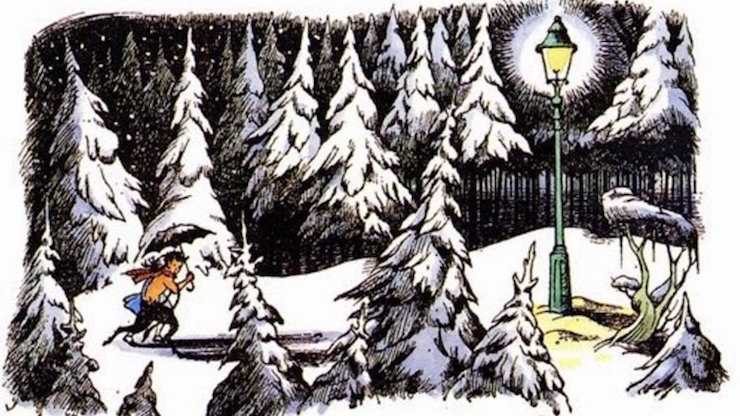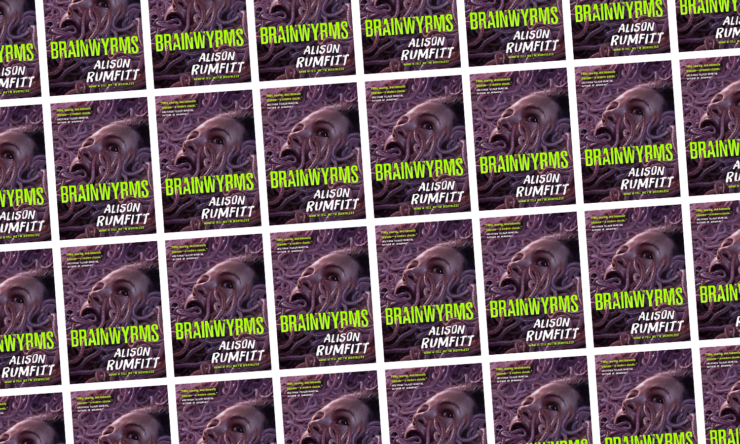Brainwyrms isn’t just the story of Frankie and Vanya—two woefully broken people who take refuge in a fragile relationship—but also a time capsule of an increasingly fascist hellscape retreating into itself like a sick turtle. It’s the story of a militantly conservative, transphobic England that gnashes its teeth at vulnerable young people and forces them into treacherous corners; even if they make it to adulthood, having the semblance of a functional life is a constant high-wire act where even the smallest slip can get you killed. Frankie, whose day job involves moderating humanity’s worst posts on social media, is a tornado of reckless impulses and a hamstrung attention span; she’s a frighteningly precise echo of your late twenties when living in the moment was king. Vanya, younger and more reserved, hides their biggest secret under carefully cultivated layers of submissiveness and muted tenacity. Even from the start, it’s clear that the relationship has an expiration date, but that isn’t really the point. This is a story about parasites.
The novel mostly focuses on Frankie and Vanya as they get together at a party, and the inevitable disappointment that follows; Alison Rumfitt here mixes one part modern relationship with one part existential crisis and a generous glug of failed interpersonal communication that hit home especially hard for me. Subsequent chapters also spiral out into the wider world of this rancid other England: We have flashbacks to Vanya’s childhood that show how they arrived at this particular present and detour into the lives of other queer and trans characters orbiting the main narrative; Rumfitt herself appears here and there to address the reader directly and cheerfully assuage their discomfort and preempt some of the more extreme scenes—a nuanced nod and smile to the sort of hand-holding that one might experience with a writer less sure of herself.
What we can be sure of is that there is something foul and frightening writhing under the surface of a country that has historically been defined by its obsession with keeping up appearances; my home country inherited something similar through a different parasite called colonialism. Rumfitt, whose work is associated with a niche subgenre of horror called “the new gross,” does not pull her punches in peeling back these layers to expose the worms in question. She is right to be remorseless and there isn’t a page that lets you forget it (and yes, it gets pretty fucking gross).
Buy the Book


Brainwyrms
Brainwyrms effortlessly weaves between familiar cycles of inner turmoil and neurosis and wildly visceral excavations into hot, wet knots of kink and pain; it isn’t just Rumfitt’s ferocious prose that gets under your skin, but the way she pulls off the rarefied technique of switching between multiple points of view and distinct voices without compromising the flow and coherence of the narrative. These varied perspectives mean witnessing the brutality of the story from within and without—from the wry, matter-of-fact exposition of the main third-person chapters to young Vanya’s first-person fragments of desperation and fragile sense of self-determination. This sense of completeness from all angles almost mirrors the totality of worms hollowing out an apple, burrowing through the meat of the issue from different angles.
For me, Brainwyrms is something of a paradox. It is decidedly not a book for everyone: Rumfitt’s work is extreme body horror that expertly wields the genre like a ritual knife. The steaming guts that it presents to you are painfully fresh and overwhelmingly ripe. It is a challenging but wholly captivating example of how perfectly horror is a vehicle for transformation and self-realization. It’s also the sort of the book, after finishing it and digesting its exploration of queerness and being trans, that you very much wish you could translate to others to show how unflinchingly Rumfitt has chronicled the monstrosity of transphobia today. But it is impossible to separate her message from her craft without losing its power.
It’s easy to see venom and hate and bigotry spreading like a disease on fiber-optic cables and wireless networks around the world. The parasite metaphor here is straightforward. Transphobia does not care who it infects—it cares only to find a suitable host, who can then pass it on to another fertile receptacle, so on and so forth. But Rumfitt transcends simple metaphor, and weaves the parasite/worm symbolism into a larger, thornier web that touches on themes of symbiosis and parasitic dynamics in things like kink and belonging and managing self-harm. In pushing these concepts into the outermost margins of body horror, Rumfitt unlocks a new kind of clarity that speaks not just to her own experience of being trans in a hellhole like England, but also to the horror of being alone with your most private transgressions.
There is no point trying to find logic in the universal primordial joy of “this makes me feel good, and it feels good to do it with other people who also like it.” The whole point of fetishes is that some people just love weirdly specific things, which might not be your thing at all—a very basic concept that remains a source of galaxy-brained confusion for many. In Brainwyrms, influential, powerful people in England get off on being violently hateful crusaders in a perceived war against respectability. Transphobia, in the contemporary English context, is a banner under which bigots revel in their own baby-brained bile, and it’s fetishistic as hell. Vanya’s mother is a textbook example of a militant TERF radicalized by Mumsnet and fed by the rants of a hundred others just like her; her mania and hunger for this sort of self-affirming discourse borders on religious fervor. They cluster together in the novel to find solace in communal hatred. And when they really get going (drugs, costumes), Brainwyrms hits a new high in orgiastic horror (orgy, worms).
When we finally return to Frankie and Vanya, it’s a grim portrait of struggling ex-lovers who, in another world, could have made something of a normal, reasonable life together. But that isn’t meant to be. Rumfitt, in a moment of pure horror, severs the defining connection between parasite and host, leaving us to watch the birth of a terrifying new dynamic that no longer needs flesh to survive.
Brainwyrms is published by Nightfire.
Alexis Ong is a freelance culture journalist with weak ankles who mainly writes about games, tech, and pop culture. Her work has appeared in The Verge, Polygon, Kotaku, Rock Paper Shotgun, VICE, Dazed Digital, and more; soft spots include science fiction, internet archaeology, comics, boxing, and old games. You can find her at her website or on Twitter.










